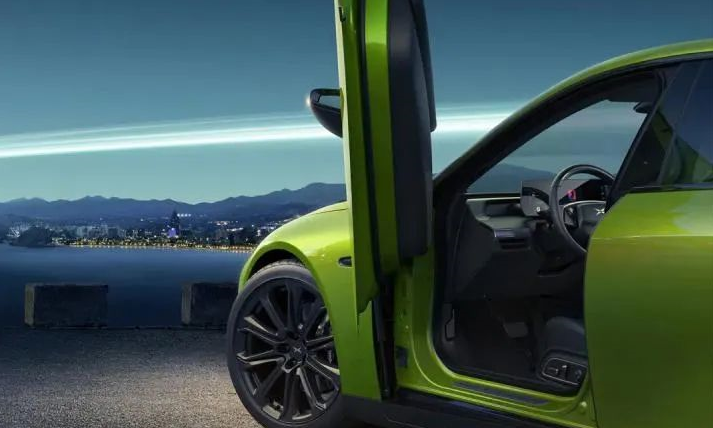Author: Xiaolong Xiaojie
Main Body
As the three leading domestic new energy vehicle manufacturers, “NIO,” “XPeng,” and “Li Auto” were originally jokingly referred to as “NioXiaoLi” by netizens based on their respective strengths. However, this situation has already changed last year.
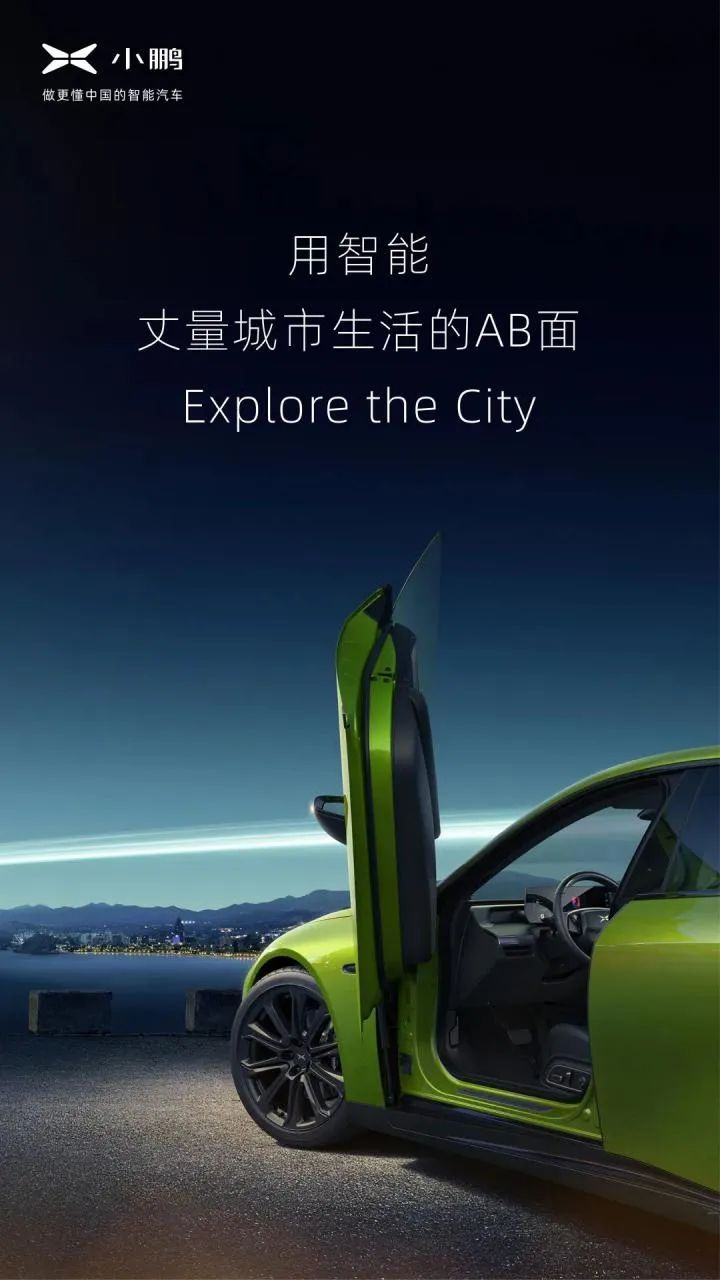
In 2021, XPeng’s total annual deliveries reached 98,155, 3.6 times that of 2020; NIO delivered a total of 91,429 cars, a year-on-year increase of 109.1%; Li Auto delivered a total of 90,491 cars, a year-on-year increase of 177.4%.
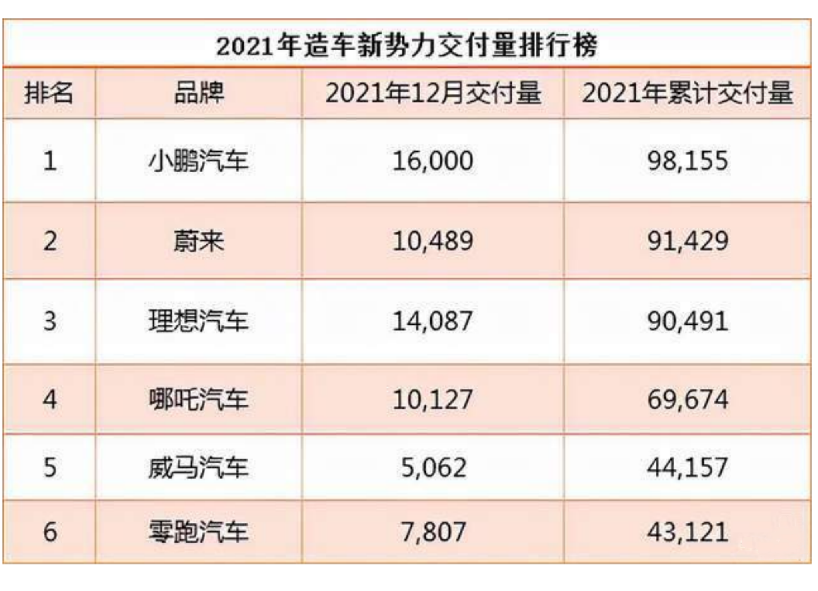
Looking back at 2020, NIO delivered 43,728 vehicles that year, Li Auto delivered 32,624 vehicles, and XPeng delivered a total of 27,041 vehicles throughout the year. In just one year, the market structure is gradually changing.
In fact, starting from the delivery of the new forces in 2018 to 2020, NIO won the sales crown for three consecutive years. Therefore, XPeng’s victory over NIO in 2021 truly has special meaning and is worth exploring the reasons behind.
Although all three companies are flourishing according to the data and have made significant improvements compared to previous years, they are all currently in a loss-making state. According to the data, in the third quarter of 2021, NIO, Li Auto, and XPeng all incurred net losses of 835 million yuan, 21.5 million yuan, and 1.59 billion yuan, respectively.
Unlike NIO which takes the high-end route and Li Auto which precisely positions itself in the 300,000-350,000 yuan family SUV market, XPeng’s vehicles are priced at around 200,000 yuan. In terms of revenue scale and gross profit margin in the third quarter of 2021, it ranked at the bottom. However, XPeng’s R&D investment ratio is the highest, even higher than the largest company in terms of volume, NIO.
The reason behind this is that XPeng’s main “smart” route, from autonomous driving to the entire vehicle’s intelligent design, involves a large amount of R&D costs. Moreover, in terms of autonomous driving technology, XPeng even claims to be “self-developed in all aspects,” and is the first in China.
What is “self-developed in all aspects”?# Translation
Looking into its origin, “Full Stack” indeed comes from “The Full Stack” concept proposed by Facebook, which emphasizes the ability to think globally and solve problems throughout the entire process. When applied to the field of autonomous driving, it refers to the car company having full control over all the key and core technologies required for autonomous driving.
Specifically, the main branches of autonomous driving technology are high-precision maps, hardware facilities represented by sensors, and software algorithms for automatic decision-making. There are also system electrical compositions that coordinate and control software and hardware.
According to XPeng Motors’ official website, “XPeng Motors insists on independent research and development, taking leading software, data, and hardware technologies as its core, bringing innovation to autonomous driving, intelligent network connectivity, and core automotive systems, and providing popular smart electric vehicles for Chinese consumers. We are the only car company in China that independently develops a full-stack autonomous driving technology including location and high-precision map fusion, perception algorithm, sensor fusion, behavior planning, motion planning and control, and applies the software to mass-produced cars.”
It must be said that XPeng Motors’ “Full Stack Self-Research” is not only based on the self-research of perception, positioning, planning, and control modules on the vehicle side, but also on self-research in the data path, cloud data acquisition and annotation, and distributed network training, forming a closed loop of data and algorithms and laying a technical foundation for rapid functional iteration, which is the advantage of XPeng Motors leading other new energy car companies. On this basis, XPeng Motors has achieved high-speed NGP (Navigation Guided Pilot), which is an automatic assisted driving navigation.
However, upon closer examination, XPeng’s “Full Stack Self-Research” is not strictly speaking “full stack,” as it also cooperates extensively with enterprises such as Amap, DaoYuan Electronics, and Livox under DJI, and the self-research and development of full-stack algorithm is also based on the underlying software and hardware provided by Desay SV.
Compared with the vehicle range and battery technology that everyone has been talking about in recent years, with the continuous development of battery technology, the automotive revolution of autonomous driving is not about powertrain, battery, motor, etc., they are not the main focus. Intelligent direction is the core, and everyone will pay attention to intelligent vehicles in the future, and no one will mention batteries, just like no one mentions mobile phone batteries.
XPeng Motors firmly grasped this focus from the beginning, focusing on the intelligent route. From XPeng’s first model G3, such as automatically adjusting seats by comparing shoulder to head ratio, measuring heart rate by monitoring facial vein through the camera, optimizing automatic parking solutions through big data, etc., it gives people a refreshing sense of technology and future compared to traditional cars.
Next, let’s talk specifically about:
Stronger proactive human-machine interaction systemIn fact, human-machine interaction seems inconspicuous but is actually an important symbol of intelligent vehicles. Since Tesla introduced an enlarged tablet into cars, this innovation has promoted the large-screen and intelligent development of automotive central screens. However, facing increasingly complex and changing road conditions and frequent safety driving problems, touch screens have become important safety hazards in certain situations. Therefore, a more intelligent and secure human-machine interaction system becomes an urgent need.
Taking the XPeng P5 as an example, the smart digital interactive cockpit, based on the Xmart OS 3.0 system and Qualcomm Snapdragon SA8155 chip, enables continuous dialogue in all scenarios, unlike the mode that requires constantly invoking wake-up words. It can bring a better driving experience. The dual-tone recognition further enhances the accuracy of voice recognition, enabling a conversational experience closer to daily conversations.
We used to operate cars by keeping an eye on the road and listening to our surroundings, actively observing and obtaining real-time vehicle status data by ourselves. In the human-machine interaction system of the L3 autonomous driving designed by XPeng, not only does it have a traditional vehicle status warning system that promptly informs drivers of potential dangers but also can actively warn and remind users of inappropriate actions. By monitoring the driver’s status in real-time, such as nodding off, through timely reminders or even an intelligent system automatically taking over the car in extreme conditions, it can avoid dangerous situations. This shift from people paying attention to cars to cars serving people better guarantees driving safety and comfort.
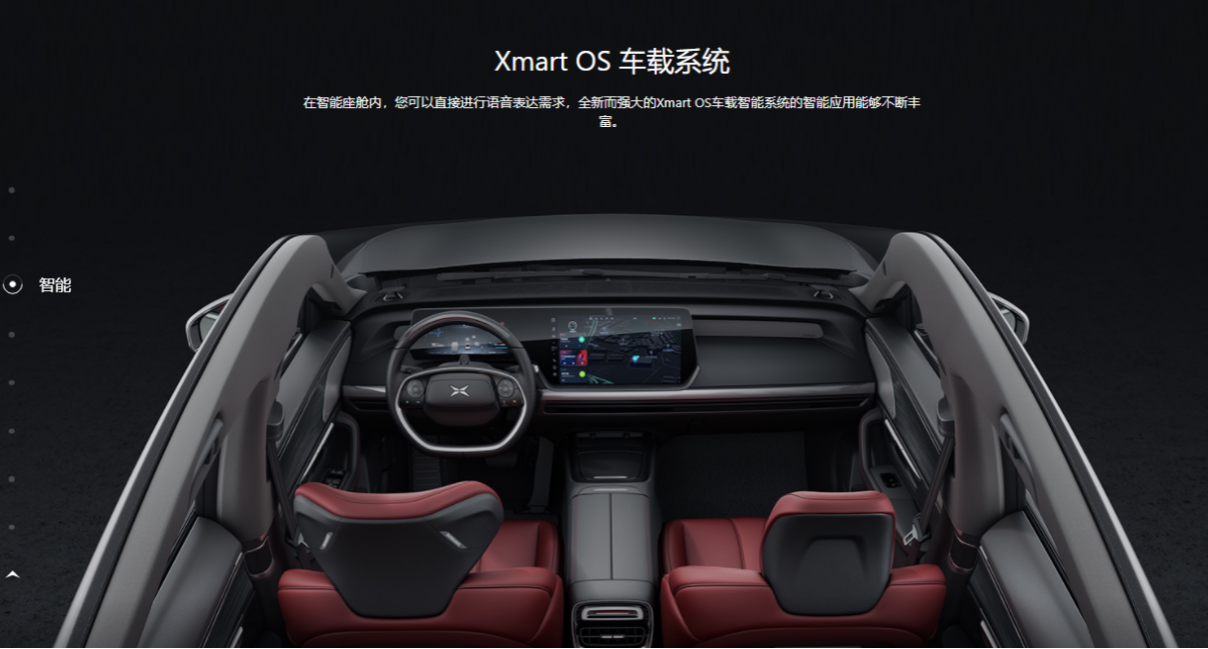
From NGP on Highways to NGP in Cities
XPeng’s Navigation Guided Pilot (NGP), that is, “Automatic Navigation Assisted Driving,” is an assisted driving function realized by combining the XPilot 3.0 system with navigation paths. You can think of it as an advanced auxiliary driving system based on high-precision maps. Due to different application scenarios, there are two versions: NGP on highways and NGP in cities. Because of the simple road conditions and less traffic on highways, it has become the first experimental and applied scenario for automatic driving. The landing of NGP in urban scenarios marks the beginning of the second half of intelligent assisted driving.
To realize NGP, powerful software and hardware are necessary. For example, the XPeng P7 equipped with NGP boasts the most powerful automatic driving hardware in mass production cars: 14 cameras, 12 ultrasonic radars, 5 millimeter-wave radars, decimal-level Gaode high-precision maps, NVIDIA Xavier computing platforms, etc.
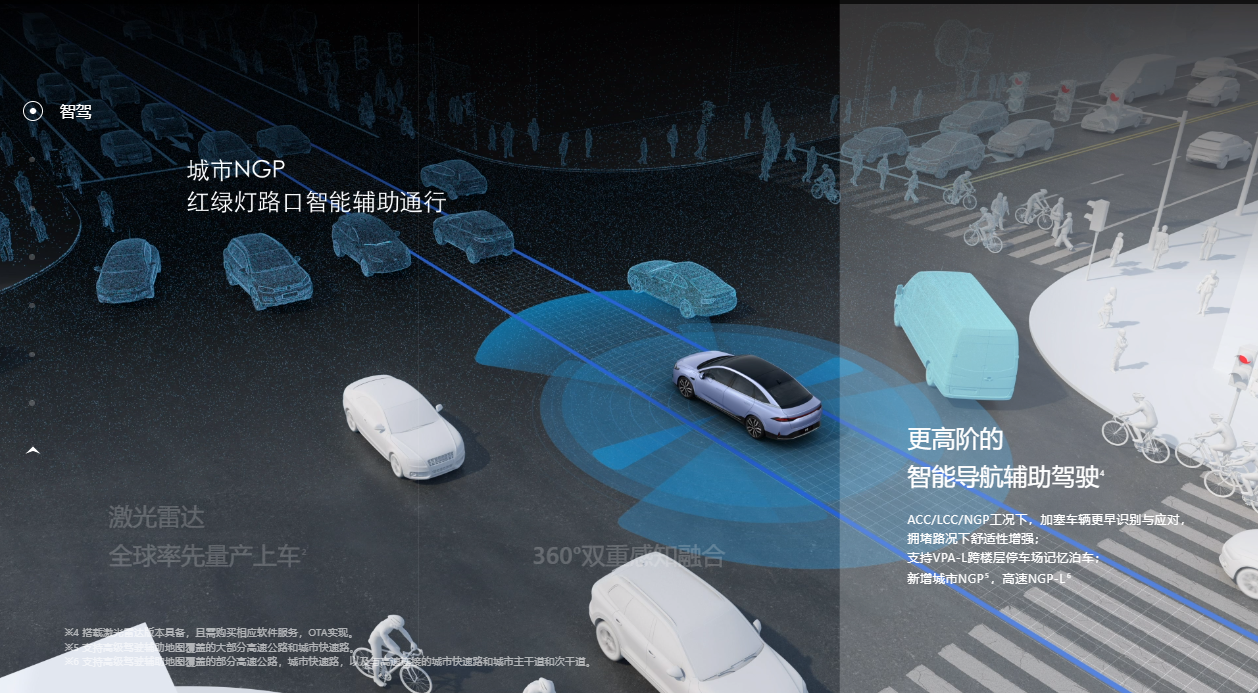 In terms of autonomous driving technology, unlike Tesla’s pure visual approach without radar, most domestic manufacturers still follow the traditional multi-sensor approach of combining radar and cameras, with the high-precision map for calculation and decision-making. The high-precision synchronized acquisition of multi-sensor data is one of the key technologies of autonomous driving. Moreover, after achieving synchronized acquisition, the synchronized control of the computing platform is also a key focus. To achieve highly synchronized acquisition and control, a high-precision time reference and high-integration computing platform with a high-speed rate are required.
In terms of autonomous driving technology, unlike Tesla’s pure visual approach without radar, most domestic manufacturers still follow the traditional multi-sensor approach of combining radar and cameras, with the high-precision map for calculation and decision-making. The high-precision synchronized acquisition of multi-sensor data is one of the key technologies of autonomous driving. Moreover, after achieving synchronized acquisition, the synchronized control of the computing platform is also a key focus. To achieve highly synchronized acquisition and control, a high-precision time reference and high-integration computing platform with a high-speed rate are required.
Currently, XPILOT 3.0 equipped in the Xpeng P7 is the first mass-produced autonomous driving solution in China that employs the NVIDIA Xavier computing platform. The computing platform can perform 3 million billion computations per second, which is 12 times the computing power of the mainstream EyeQ4 platform. Coupled with the precise control capability brought by Bosch iBooster, the P7 can deliver various high-level, autonomous driving assistance functions such as high-speed autonomous navigation and parking, and memory parking. Additionally, the P7’s autonomous driving assistance system can achieve rapid iterations of functions through data feedback by learning the user’s driving habits.
Currently, Xpeng can already achieve automatic speed limit adjustment, automatic switching of high-speed lanes, optimal lane selection, automatic entry and exit of ramps, automatic overtaking on congested roads, nighttime overtaking reminders, evasion of abnormal vehicles, automatic emergency lane change, as well as recognition and avoidance of heavy-duty vehicles and traffic cones. Furthermore, this system supports most Chinese highways, expressways, and some city arterial roads, making its application quite extensive.
The P7 has also become the first intelligent electric vehicle in China to achieve the “last kilometer memory parking” function. The introduction of this function means that Xpeng has made significant breakthroughs in the field of ultra-low-speed autonomous driving assistance, consolidating the leading position of the XPILOT autonomous driving assistance system in the industry.
The vehicle’s Over-the-Air (OTA) technology is also worth mentioning, which is commonly known as an online upgrade. In Tesla’s recent recall campaign in China on February 18th, OTA capability was mentioned. For vehicles equipped with OTA, some technical problems can be more easily solved through online upgrades.However, unlike Tesla’s car system, which is based on modified Linux, the Xmart OS system self-developed by XPeng Motors on the basis of its own SPEA (Smart Electric Platform Architecture) intelligent electric platform has more potential. Due to the application mode of Tesla’s system being similar to Apple’s closed system, which means it is incompatible with other systems, like Android and Apple systems cannot be interoperable. Each application needs to be redeveloped based on the characteristics of the Tesla system. XPeng Motors’ Xmart OS system is developed based on Android and has better compatibility, making it capable of quickly adapting to existing Android platform applications.
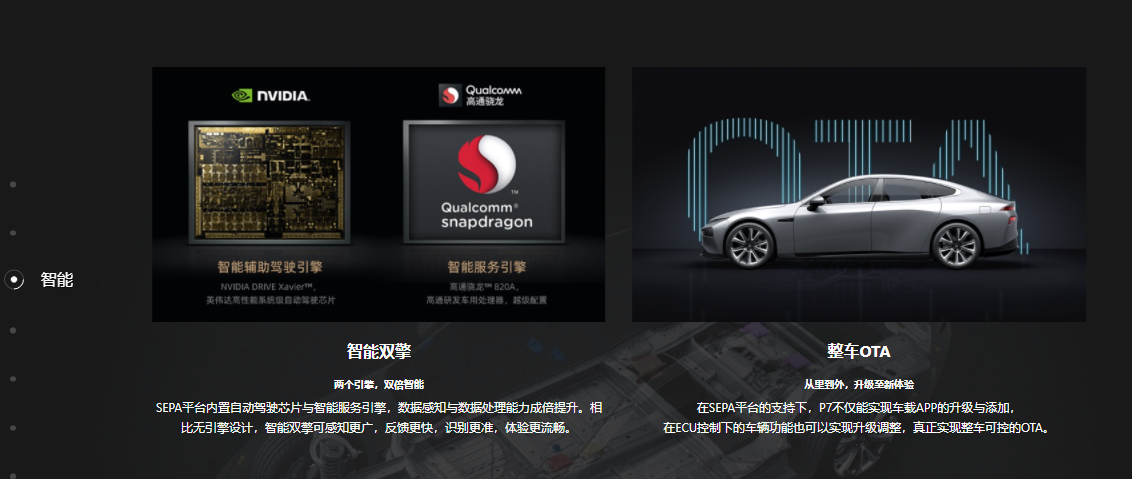
On the earliest G3 model, XPeng has already opened up popular applications such as game simulators and Karaoke OK. Xmart OS 2.0 on the P7 also supports dual application ecosystems of app stores and Alipay mini-programs, and currently supports more than 100 applications and service scenarios. In the P5 version, combined with the rapid development of 5G networks is becoming a reality, it can achieve more AIOT hardware access and is compatible with a larger in-car ecosystem. The so-called AIOT is the abbreviation of “AI” + “IOT”, which means the integration of artificial intelligence and the Internet of Things in practical applications.
To summarize the whole vehicle OTA using a mobile phone example, in fact, the OTA can be divided into two types. One is similar to the upgrade of mobile software APP, and the other is similar to the upgrade of mobile operating system, like Huawei’s Harmony system, Apple’s iOS system, etc. The charm of the whole vehicle OTA lies in the ability to implement underlying system upgrades, which is a powerful tool in improving automotive software performance and real-time problem-solving.
Intelligent Battery and Motor System Technology
As XPeng Motors targets the intelligent route, the focus is on the intelligent design of the entire vehicle, and the core technology of batteries and motors is mainly controlled by various suppliers. Its battery main suppliers include CATL, as well as CALB and EVE Energy. As for the motor, known suppliers currently include Jing-Jin Electric (JJE) and and Zhong-Jie Electric (ZJE).
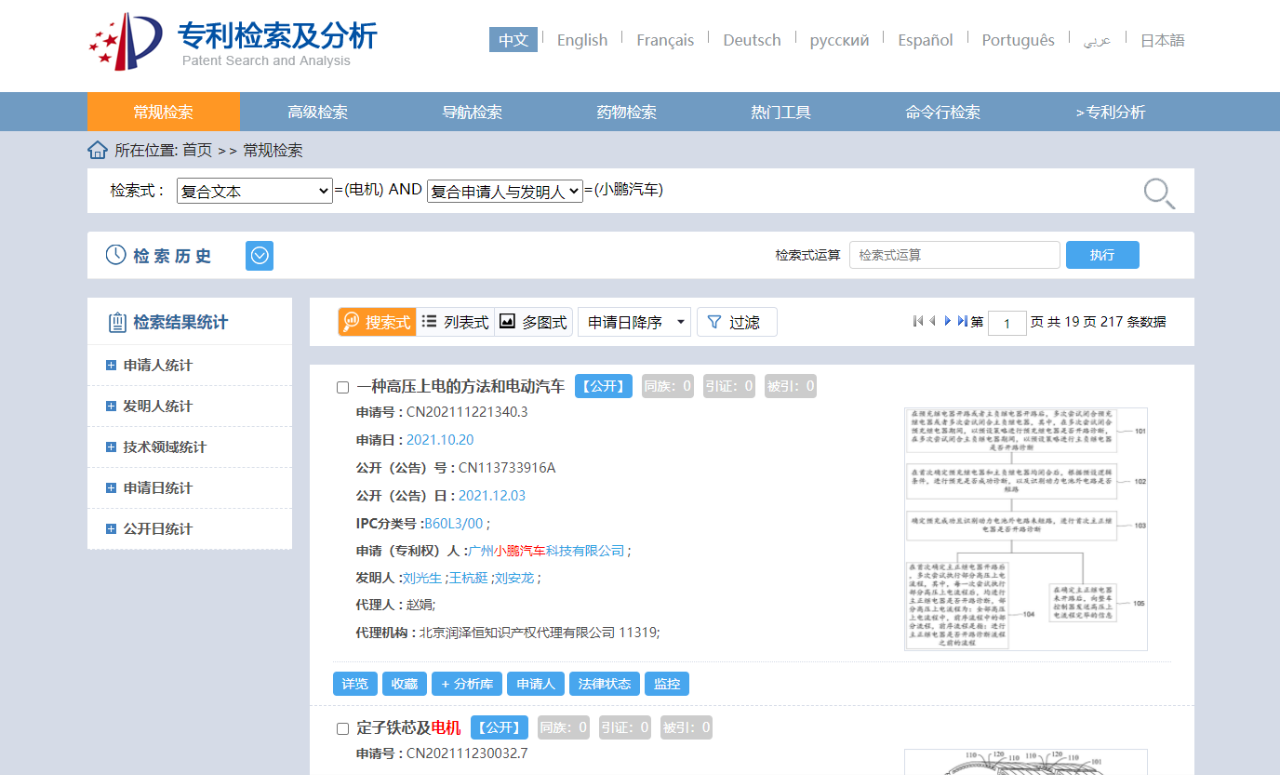
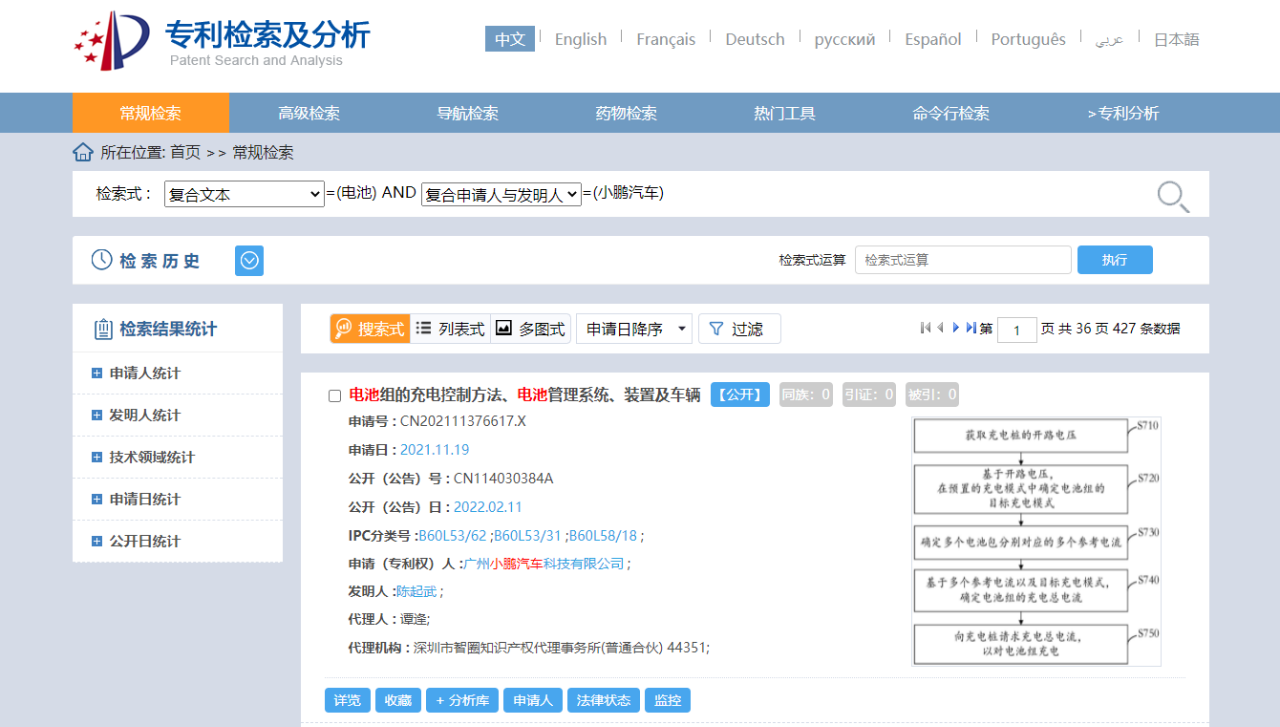 The author found through the patent retrieval and analysis system of the National Intellectual Property Office that the technological focus of XPeng Motors on batteries and motors mainly revolves around battery peripherals and control and monitoring technology. On the one hand, the development cost of battery materials is high, and a large investment is required for independent research and development, with uncertain risks. On the other hand, the technical threshold of motors is relatively low, and the motor technology on the market is mature enough.
The author found through the patent retrieval and analysis system of the National Intellectual Property Office that the technological focus of XPeng Motors on batteries and motors mainly revolves around battery peripherals and control and monitoring technology. On the one hand, the development cost of battery materials is high, and a large investment is required for independent research and development, with uncertain risks. On the other hand, the technical threshold of motors is relatively low, and the motor technology on the market is mature enough.
Therefore, as a new force, XPeng Motors has indeed made the most optimal choice at present, seizing the characteristics of intelligence in the fiercely competitive new energy vehicle market, and has made a place for itself.
Specifically, XPeng Motors continues to innovate from the design of the battery pack and the integration structure of the vehicle body, to the monitoring of the power battery, the processing and analysis of battery data and other intelligent links, so as to achieve accurate control of the battery status and better support the decision-making and control of on-board artificial intelligence. Especially in the current frequent safety problems of batteries, such an intelligent analysis system can use and maintain the battery more efficiently in practical scenarios.
Taking the XPeng P5 as an example, under extremely low temperatures, the intelligent thermal management system can keep it in the optimum working temperature range according to the needs of the power system, improving the winter range by about 15% compared to traditional PTC heating.
The main principle is simply to intelligently judge the battery status and use a heat pump system or water heater to properly heat or keep the battery warm. To put it simply, the specific design of many details such as the intelligent analysis and distribution of sensors, the specific heating mode, the layout of heaters, the heating rate, and the safety of the battery requires numerous theoretical basis and actual data support.
Similarly, the same approach is taken with the motor. If the products of the same supplier are combined with XPeng’s self-developed patents, more accurate monitoring and control can be achieved, and better performance and longer service life can be demonstrated under the same conditions. For example, the cooling problem of batteries during high-power operation and the service life of the center coil in high-voltage motors.
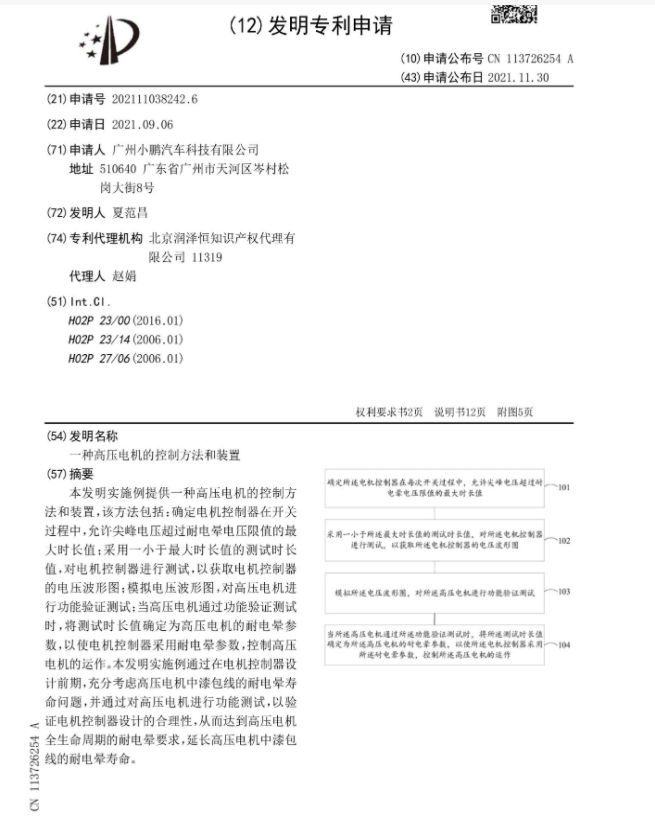
System SecurityIn the era of intelligent big data, while convenience is prioritized, information security remains the top concern for users. Since the P7 version, XPENG has equipped an independent programmable security object (PSO) for information security. XPENG claims that its identity authentication security technology is on the same level as Alipay’s password-free payment, which complies with the financial-level standard of IFAA (Internet Finance Authentication Alliance).
At the 2019 Alibaba Cloud Computing Conference, during the forum on digital identity ecosystem, Vice President of XPENG, Ji Yu officially introduced the “financial-level secure digital car key” (hereinafter referred to as digital car key), and announced that XPENG Automotive and IFAA have established a digital car key focal group to jointly develop and release safety standards for digital car keys. The digital key is first carried on the electric intelligent coupe XPENG P7, which marks P7 as the world’s first intelligent vehicle to integrate IFAA financial security technology with the IoT scene.
As for the safety features of XPENG P7’s autonomous driving system, it is quite noteworthy. It has two sets of computing platforms, XPILOT 3.0 and XPILOT 2.0 computing platforms, that run independently on hardware, serving as a redundancy backup. The core module of XPILOT 3.0 computing platform reaches the highest level of ASIL D, ensuring stability and safety in automotive functionality security.
In general, XPENG Automotive stands out among domestic new energy vehicle brands with its unique software development capability and intelligent development direction. Objectively speaking, its so-called full-stack research and development still has some room for improvement, but this is the characteristic of automobile enterprises that should blend and depend on each other. It is difficult for any single enterprise to achieve independent technological development capability throughout the entire industry chain. They can only master the core autonomous research and development capability, maintain their own distinct features, and carry out cooperation in necessary areas to reasonably reduce costs. In the era of economic globalization, mutual benefit and win-win cooperation are the trend.
This article is a translation by ChatGPT of a Chinese report from 42HOW. If you have any questions about it, please email bd@42how.com.
